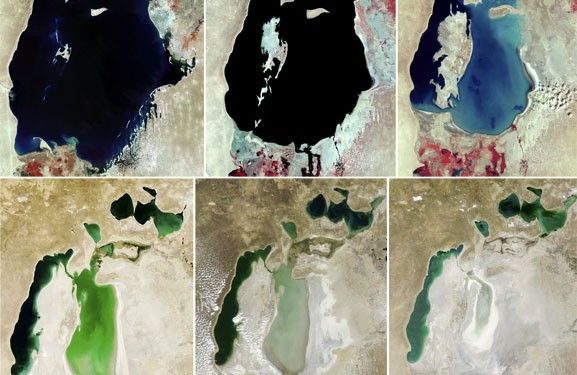Jakarta, Indonesia Sentinel — A report by the United Nations Convention to Combat Desertification (UNCCD) reveals that world drought now impacts 40% of the Earth’s land, a stark increase that has been unfolding over the past few decades.
According to the UNCCD, by 2020, 77.6% of the planet’s land experienced prolonged dryness, with dryland areas expanding by 4.3 million square kilometers over the past three decades. The latest findings show that 40.6% of Earth’s land is now classified as dry.
The report highlights an alarming trend where previously unaffected areas have transitioned into drylands. Additionally, regions that were already considered arid are becoming even drier, with consequences that may be irreversible.
“As climates in many regions become drier, the ability to return to previous conditions is disappearing. Large swaths of land worldwide are drying up and are unlikely to recover,” said UNCCD Executive Secretary Ibrahim Thiaw in a statement, as reported by CNBC Indonesia.
Regions Most at Risk
The report identifies Europe as the most impacted region, with 95% of its land showing signs of drought. Other heavily affected areas include the western United States, Brazil, parts of Central Africa, and East Asia.
In the western U.S. and Brazil, increasing dryness has exacerbated water scarcity and wildfires, while Central Africa and parts of Asia are experiencing severe ecosystem degradation and desertification, threatening biodiversity and local communities.
The Growing Threat of Drought
The UNCCD warns that without aggressive efforts to curb greenhouse gas emissions, an additional 3% of Earth’s humid lands could become drylands by the end of this century.
Scientists have modeled scenarios for a world with high greenhouse gas emissions, predicting a dramatic expansion of drought-stricken areas.
Under this scenario, regions including the U.S. Midwest, central Mexico, northern Venezuela, northeastern Brazil, southeastern Argentina, the Mediterranean, the Black Sea, southern Africa, and southern Australia could face significant drought.
Consequences of Worsening Drought
The spread of drought carries dire consequences for food security, water availability, and the stability of ecosystems worldwide. Increasing aridity accelerates desertification, reduces arable land, and exacerbates water shortages, threatening agriculture and livelihoods for billions of people.
The Mystical Bunian: Guardians of Indonesia’s Hidden Realms
In regions prone to wildfires, prolonged drought heightens the frequency and severity of fires, causing economic damage, loss of life, and further destruction of ecosystems. Meanwhile, communities in the Global South, particularly in Africa and Asia, face worsening poverty and displacement as their lands become uninhabitable.
The findings serve as a critical warning ahead of global climate negotiations, urging policymakers to prioritize sustainable land use practices and strengthen commitments to reduce greenhouse gas emissions. Without significant intervention, experts caution that the intensification of drought could reshape the planet’s landscapes and displace millions in the world by the century’s end.
(Raidi/Agung)


























